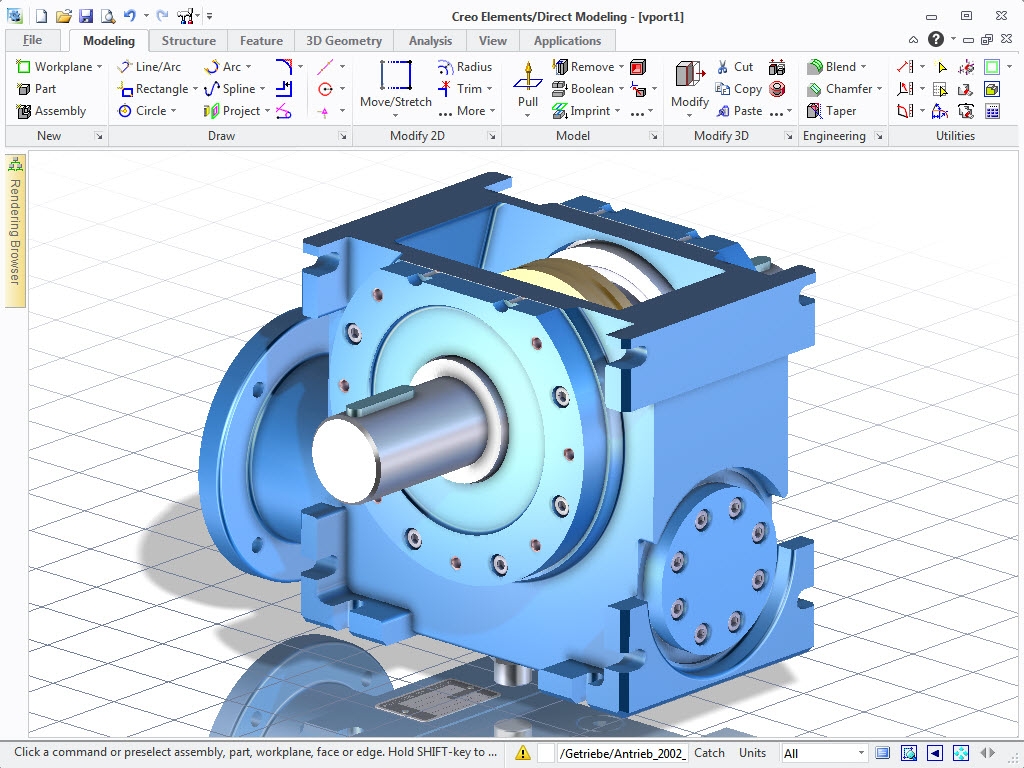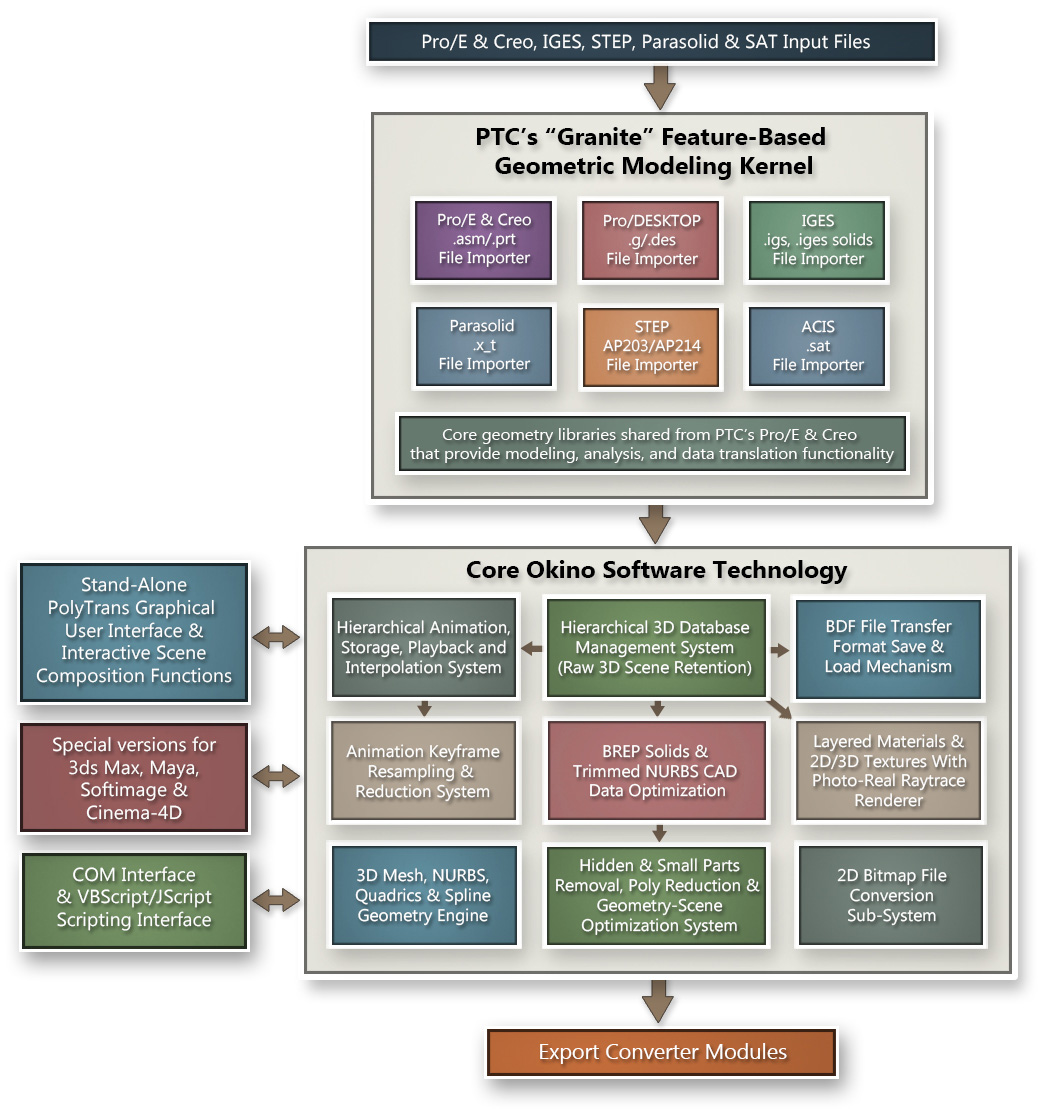
Added support of UNICODE ( UTF-8) filenames. Improved compatibility with OpenGL ES 2.0. Improved performance of p-curve reconstruction within STEP import. Improved robustness of surface-surface intersection and curve on surface projection. Introduced built-in multi-threading parallelization tools as alternative to TBB library. Introduced "Fuzzy" Boolean operations with specified global tolerance. CDL files have been replaced by pre-generated C++ headers. WOK (Workshop Organization Kit) has been replaced by CMake building scripts. TKOpenGl now uses GLSL programs by default. Added AIS_Manipulator for interactive object transformations in 3D viewer. Improved rendering performance of Wireframe AIS_Shape presentation. Improved STEP AP242 support, including PMI, dimensions and annotations. OCAF persistence without dynamically-loaded plugins. Added Weighted OIT ( Order-independent_transparency) rendering feature. Added support of annotations, saved views and clipping planes to STEP and XDE. 
Added "Glue" option to Boolean algorithms.Added support of OCAF binary files larger than 2 GiB.Added support of UNICODE filenames with MinGW-w64.
 Added distance and size culling rendering features. Optimized surface intersection, shape offset and Boolean operation algorithms. Added algorithm constructing OBB (oriented bounding box). Removed legacy Local Context functionality from AIS and legacy Boolean operations. Added fast HLR-alike OpenGL rendering mode. Added support of 3/4 and box clipping configurations to 3D viewer. Added AIS_ViewController mapping user input to 3D viewer camera manipulations. Improved performance of built-in parallelization tools (OSD_Parallel). Improved robustness and stability of Boolean operations and Extrema. Improved BRepMesh performance, robustness and accuracy. WebAssembly target platform support (including WebGL viewer).
Added distance and size culling rendering features. Optimized surface intersection, shape offset and Boolean operation algorithms. Added algorithm constructing OBB (oriented bounding box). Removed legacy Local Context functionality from AIS and legacy Boolean operations. Added fast HLR-alike OpenGL rendering mode. Added support of 3/4 and box clipping configurations to 3D viewer. Added AIS_ViewController mapping user input to 3D viewer camera manipulations. Improved performance of built-in parallelization tools (OSD_Parallel). Improved robustness and stability of Boolean operations and Extrema. Improved BRepMesh performance, robustness and accuracy. WebAssembly target platform support (including WebGL viewer). 
Real-time Physically based rendering (PBR) renderer using Metallic-Roughness material model.In 1998 the company abandoned software development to concentrate on services, and most of the software development facilities were sold to Dassault Systèmes, developer of competing CATIA.

3 CAD Programs based on Open Cascade TechnologyĬAS.CADE (abbreviated from Computer Aided Software for Computer Aided Design and Engineering) was originally developed in the early 1990s by Matra Datavision, developer of Euclid CAD software as the underlying infrastructure for its future version Euclid Quantum.








 0 kommentar(er)
0 kommentar(er)
